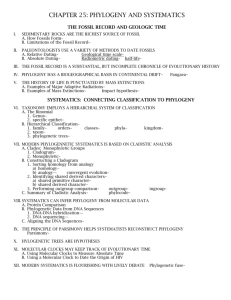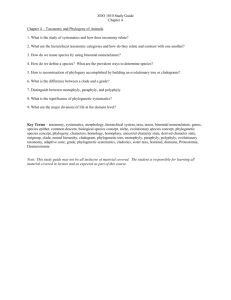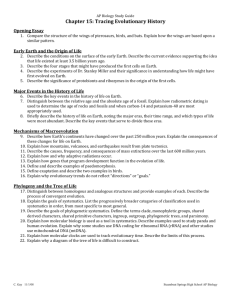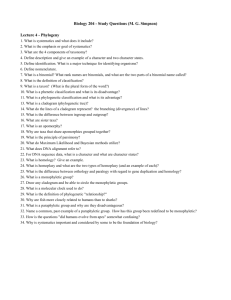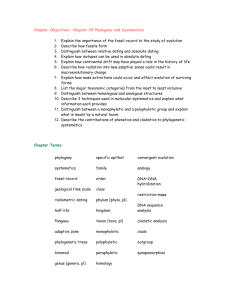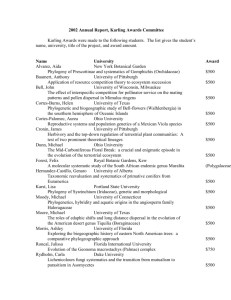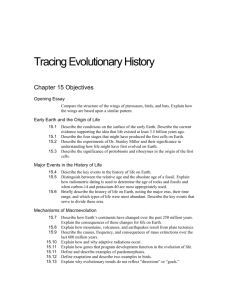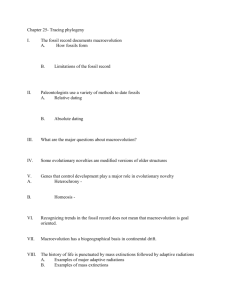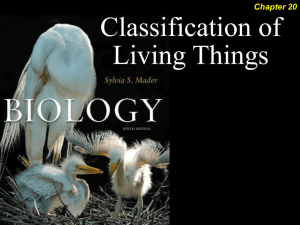Principles of Biology ______Lake Tahoe
advertisement
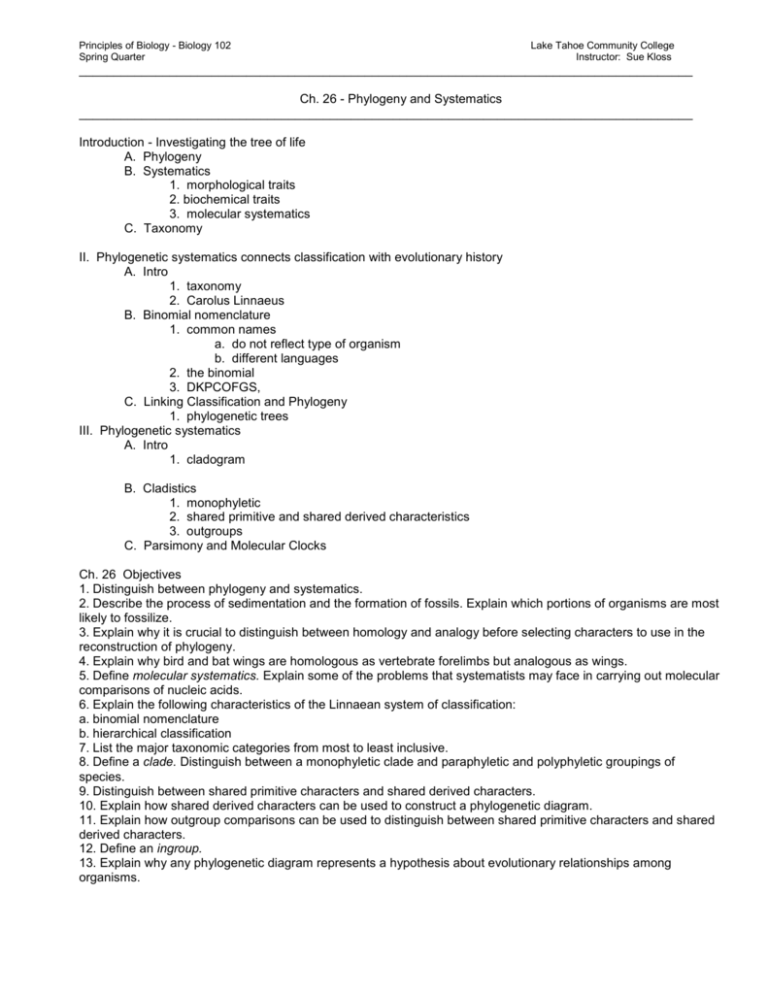
Principles of Biology - Biology 102 Spring Quarter Lake Tahoe Community College Instructor: Sue Kloss ________________________________________________________________________________________ Ch. 26 - Phylogeny and Systematics ________________________________________________________________________________________ Introduction - Investigating the tree of life A. Phylogeny B. Systematics 1. morphological traits 2. biochemical traits 3. molecular systematics C. Taxonomy II. Phylogenetic systematics connects classification with evolutionary history A. Intro 1. taxonomy 2. Carolus Linnaeus B. Binomial nomenclature 1. common names a. do not reflect type of organism b. different languages 2. the binomial 3. DKPCOFGS, C. Linking Classification and Phylogeny 1. phylogenetic trees III. Phylogenetic systematics A. Intro 1. cladogram B. Cladistics 1. monophyletic 2. shared primitive and shared derived characteristics 3. outgroups C. Parsimony and Molecular Clocks Ch. 26 Objectives 1. Distinguish between phylogeny and systematics. 2. Describe the process of sedimentation and the formation of fossils. Explain which portions of organisms are most likely to fossilize. 3. Explain why it is crucial to distinguish between homology and analogy before selecting characters to use in the reconstruction of phylogeny. 4. Explain why bird and bat wings are homologous as vertebrate forelimbs but analogous as wings. 5. Define molecular systematics. Explain some of the problems that systematists may face in carrying out molecular comparisons of nucleic acids. 6. Explain the following characteristics of the Linnaean system of classification: a. binomial nomenclature b. hierarchical classification 7. List the major taxonomic categories from most to least inclusive. 8. Define a clade. Distinguish between a monophyletic clade and paraphyletic and polyphyletic groupings of species. 9. Distinguish between shared primitive characters and shared derived characters. 10. Explain how shared derived characters can be used to construct a phylogenetic diagram. 11. Explain how outgroup comparisons can be used to distinguish between shared primitive characters and shared derived characters. 12. Define an ingroup. 13. Explain why any phylogenetic diagram represents a hypothesis about evolutionary relationships among organisms.
